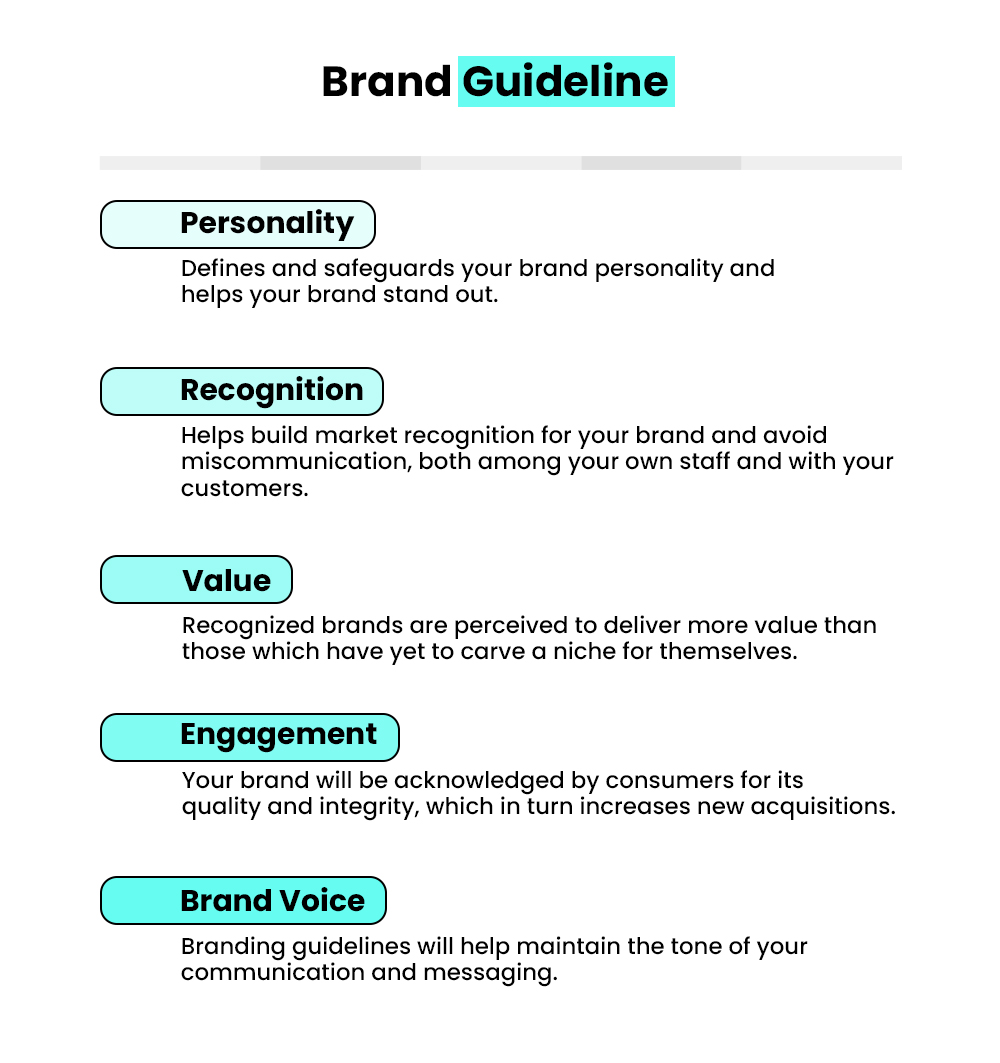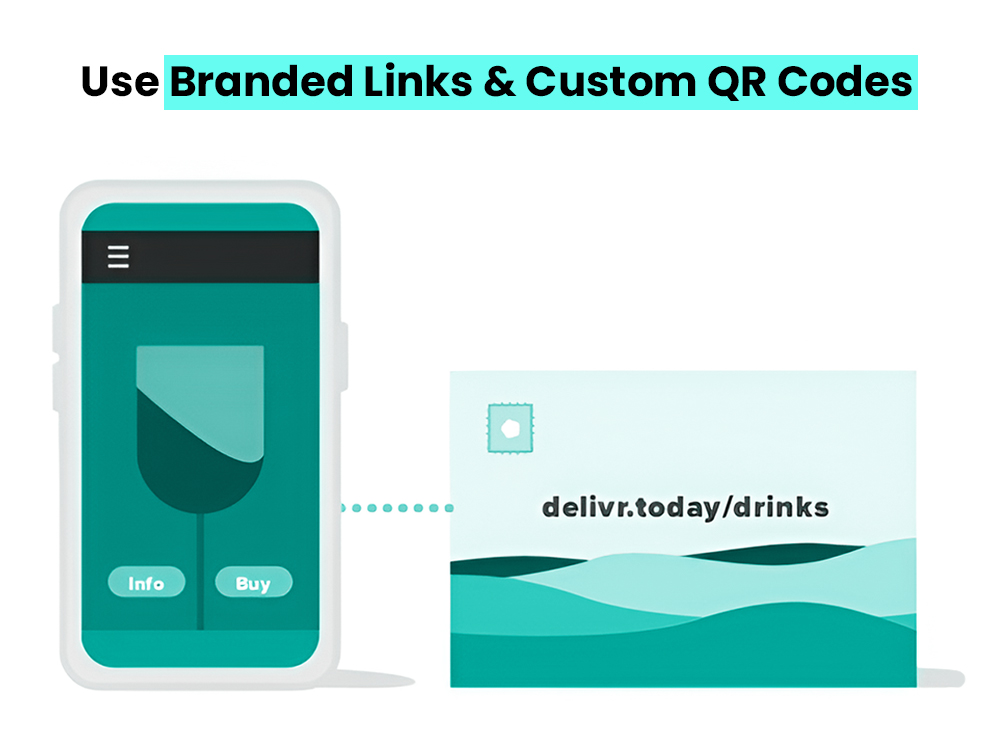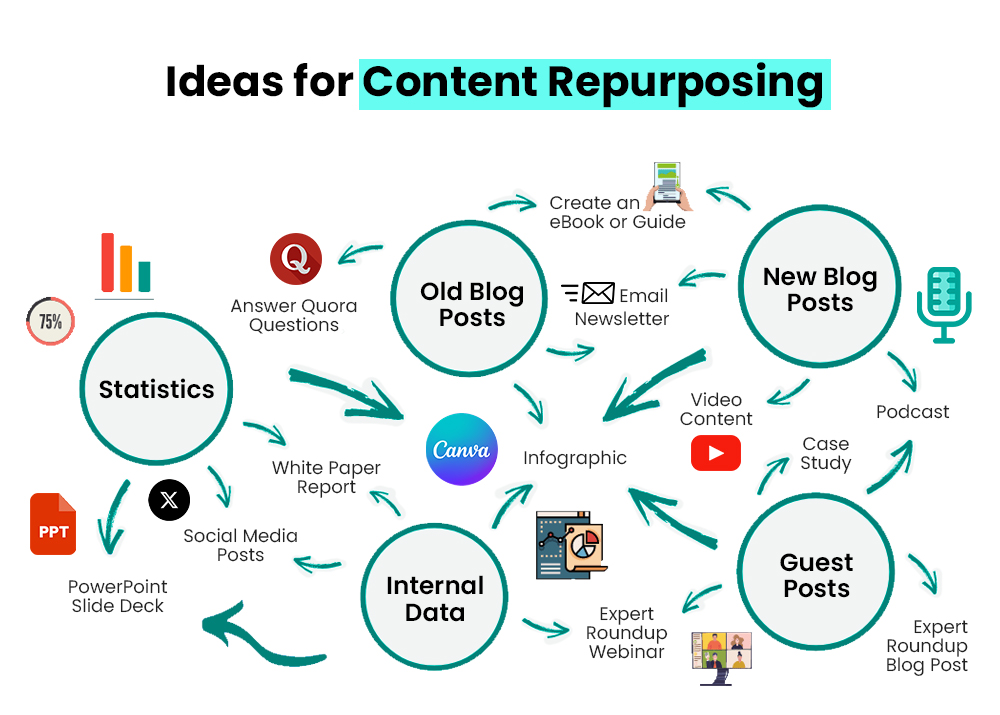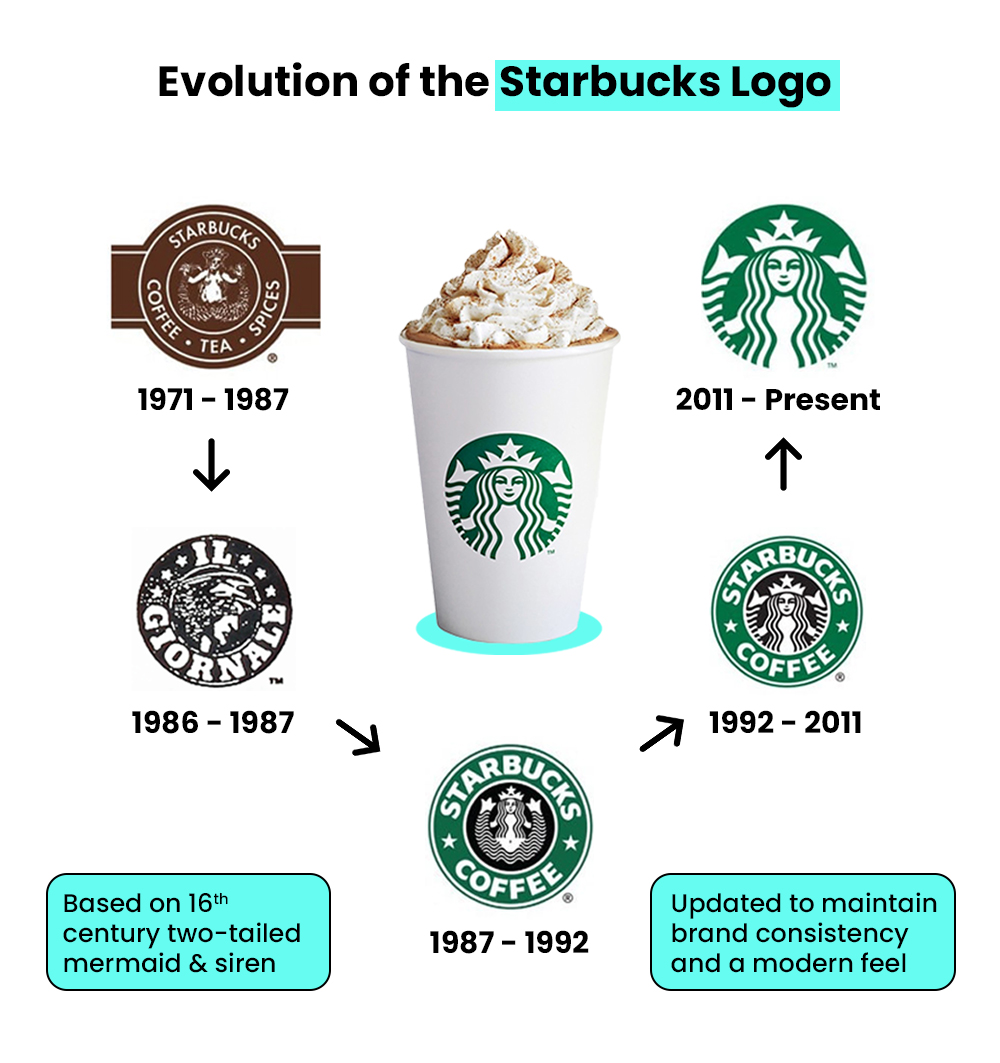10 Strategies For Maintaining Brand Consistency Across Platforms
Have you ever wondered why some brands are instantly recognizable no matter where you see them online? Maintaining brand consistency across platforms is more than just a nice-to-have; it’s essential. Whether a customer interacts with your brand on Instagram, your website, or through email, every touchpoint should tell the same story.
Brand consistency means presenting your business in a way that it looks the same visually, verbally, and emotionally across all digital channels. It’s about aligning your messaging, tone, visuals, and overall identity so your audience always knows it’s you. When done right, it builds brand recognition, boosts trust, and encourages long-term loyalty.
This blog post is your guide to navigating this digital landscape. You can find actionable strategies to help you stay on-brand across various digital platforms. From social media and websites to emails and ads, you’ll learn how to create a consistent brand experience that resonates with your audience and stands the test of time.
What Is Brand Consistency?
Brand consistency ensures your company’s message, visuals, and values are presented uniformly across all marketing channels, creating a recognizable experience for your audience. To put it simply, a brand’s ability to maintain positioning and communication in line with its values and the elements that make up its identity.
Maintaining brand consistency across platforms is essential in branding work because organizations look to develop their image through elements that make up the brand.

Why is Consistent Branding Important?
By conveying a sense of reliability and professionalism, consistent branding helps build trust. In fact, around 46% of customers are willing to pay more for a product or service from their trusted brand.
Let’s discuss some of the important points to highlight why consistent branding is important:
1. Boosts Brand Value
A study by Forbes shows that maintaining brand consistency across platforms can boost revenue by 23%. This increased revenue directly links to your brand’s market value.
When your brand remains consistent across all touchpoints, whether it’s messaging, look, and customer experience, it develops a unified and professional image that clicks with consumers alike. So yes, steady branding helps increase your brand’s overall value.
2. Gaining a Competitive Edge Through Consistent Messaging Across Marketing Channels
In a saturated digital world, consistent messaging across all marketing channels sets a brand apart. When your visuals, tone, and value proposition are aligned on every platform, be it your website, social media, or email campaigns, you build a clear, recognizable identity.
This uniformity strengthens trust and reinforces your brand’s unique position in the market. A brand marketing agency ensures your digital presence communicates the same story everywhere, helping you stay top-of-mind in a crowded space.
3. Simplify Marketing Efforts and Reduce Costs with Brand Consistency
When you maintain brand consistency across digital platforms, marketing becomes more streamlined and cost-effective. Instead of creating new assets for every channel, you can rely on regular templates, visual elements, and messaging guidelines.
This approach not only reduces time and production costs but also ensures your brand looks and feels the same wherever it’s noticed. By using consistent marketing materials across email, social media, and the web, you strengthen recognition and eliminate unnecessary creative spending.
Forbes reports that consistent visual branding can boost recognition by up to 80%—making every dollar you invest work harder.
4. Boost Employee Engagement Through Consistency in Branding
Consistency in branding shapes public perception and strengthens internal alignment. When your team clearly understands and represents a unified brand identity, it develops a shared sense of purpose and direction.
This internal clarity leads to higher engagement, stronger collaboration, and a more unified representation of the brand across digital platforms. Employees who are aligned with the brand’s voice and values naturally become ambassadors, helping to maintain brand consistency in every customer touchpoint, from emails to social media interactions.
Easy Tips for Consistent Branding Across All Platforms
After knowing the importance of brand consistency in the above section, learn how to execute it better. Follow these consistent branding strategies:
1. Start with a Clear Mission
A strong mission is the foundation of maintaining brand consistency across platforms. It should guide your brand’s tone, visuals, messaging, and decision-making. Ask yourself:
- Why does your brand exist?
- What is it here to achieve?
- Does your team understand and represent that mission?
- Does it connect with your audience’s needs?
Consistent brands communicate their mission clearly, both internally and externally. Internally, it should shape your company culture and everyday actions. Externally, it should be visible across your website, social media, and marketing touchpoints. When everyone is aligned with the mission, consistency naturally follows.
– Also Read- 7 Effective Online Branding Strategies to Stand Out Online in 2025
2. Update Your Brand Identity Guidelines Regularly
“Branding is the process of connecting good strategy with good creativity.”
— Marty Neumeier, author of The Brand Gap
The major brand consistency challenge is outdated or unclear brand guidelines. Without a solid reference point, teams can easily go off-brand across different platforms.
A well-crafted style guide helps avoid this by outlining how to represent your brand visually and verbally. Ensure your guide includes:
- Typography
- Logo variations
- Imagery style
- Color palettes
- Taglines
- Also, define your tone of voice so your messaging feels consistent across channels.
Your brand’s visual identity should reflect your values and personality, helping you stand out in a crowded digital space. But it shouldn’t be static. Regularly reviewing and updating your brand guidelines ensures they stay aligned with your evolving mission, audience, and market trends.

Consider conducting a brand audit to spot inconsistencies and gather feedback from key stakeholders. This proactive step helps keep your brand sharp, relevant, and consistently presented everywhere it shows up.
– Also Read- Brand Identity vs. Brand Image: Understanding the Difference and Why it Matters
3. Create Simple and Scalable Brand Processes
A style guide is essential, but to truly maintain brand consistency, your team needs easy-to-follow systems that bring those guidelines to life. Start by using brand management tools that simplify asset creation and ensure consistency across all platforms:
- Canva- For quick, on-brand visuals without heavy design skills
- Brandfolder- Centralizes assets for easy access and sharing
- Jira- Manages creative projects and tracks tasks
- Slack- Keeps communication clear and fast between teams
Also, provide ready-made resources like branded decks, email templates, and document designs to reduce guesswork and keep everyone aligned. Regular check-ins between marketing and design teams are just as important. These syncs help:
- Align project stakeholders early on
- Ensure visuals and messaging feel consistent
- Group related projects for smoother execution
- Keep deliverables on-brand and on-voice
When the right tools and habits are in place, your team can maintain brand consistency effortlessly even as you scale across digital touchpoints.
4. Use Branded Links & Custom QR Codes
Branded links aren’t just cleaner; they also reinforce your brand and build trust. Unlike long, generic URLs, they keep your name visible, feel more professional, and support high-quality digital branding.
Plus, with tools like Bitly, you can track clicks and user behavior to measure performance. Custom QR Codes work the same way. A quick scan leads users straight to your content, but with style. You can match your brand’s colors, logo, and design, keeping your visuals consistent across every touchpoint. Both tools allow you to:
- Maintain a unified look across channels
- Drive engagement through sleek, on-brand links
- Gather data on user behavior and optimize accordingly
Branded links and QR Codes may seem small, but they make a big difference in keeping your digital presence polished and cohesive.

5. Measure the Impact of Brand Consistency
To know if your efforts are working, track metrics linked to maintaining brand consistency across platforms. Key indicators include:
- Brand awareness- Are people recognizing your logo, colors, or messaging? Use surveys, social listening, and search volume data.
- Engagement- Look at likes, shares, comments, and site interactions to measure connection.
- Sentiment- Monitor how customers feel through reviews, social media, and sentiment analysis tools.
- Customer loyalty- Track repeat purchases, retention, and referrals.
If you update your branding, watch how these metrics shift. A drop could mean it’s time to revisit your visuals or messaging.
Strong metrics start with clear direction, create brand guidelines to align teams, and keep branding consistent across every touchpoint.
6. Stay Organized Across All Channels
To maintain brand consistency, your messaging, visuals, and tone of voice must align across every platform—social media, email, websites, and ads because cross-channel organization is key.
Use a content calendar to plan campaigns and ensure every piece of content reinforces the same message and visual identity. It keeps teams in sync and avoids conflicting communications.
Complete this with regular team check-ins, whether bi-weekly, monthly, or quarterly. These meetings help teams align on upcoming campaigns, review brand messaging, and catch any inconsistencies early.
When everyone is organized and on the same page, your brand shows up consistently no matter where your audience finds you.
7. Conduct A Brand Audit
Even with solid brand positioning, inconsistencies can appear over time. A regular brand audit helps you identify areas where your brand may be drifting off-course and ensures alignment across all digital platforms.
Here’s what a brand audit should cover:
- Content and messaging gaps- Is your messaging aligned across channels?
- Visual consistency- Are your brand colors, fonts, and imagery used correctly?
- Audience alignment- Does your branding still resonate with your target audience?
- Performance insights- Use tools like Google Analytics to track the traffic sources, user engagement, and conversion rates.
Regular audits help refine your branding strategy and maintain a consistent, trustworthy brand image across all touchpoints.
– Also Read- Brand Voice: 7 Top Things to Consider in Brand Building
8. Keep Customer Service On-Brand
To maintain brand consistency, your customer service must reflect your brand’s voice and personality across every channel. Whether it’s social media, email, phone, or in-person, every customer touchpoint should feel like a seamless brand experience.
Here’s how to make it happen:
- Create voice and tone guidelines specific to customer interactions.
- Train your team to represent the brand’s personality in every conversation.
- Use consistent language and messaging across all support platforms.
- Monitor customer interactions to ensure brand-aligned service delivery.
For example, Disney trains all team members (“cast members”) to deliver service that keeps the brand’s magic alive in every moment.
When your customer service is consistently on-brand, it builds trust and deepens emotional connections with your audience.
9. Repurpose Content Across Platforms
Repurposing content is a smart way to ensure you’re maintaining brand consistency across platforms. When done strategically, it strengthens brand recognition and maximizes content value. Here’s how:
Turn blogs into videos while keeping the same title, visuals, and tone to reinforce your identity.
Use consistent branding elements like your logo, brand colors, and fonts across all social media platforms.
Create templates for posts, stories, and video intros to keep the look uniform.
By aligning your messaging and visuals across formats, you stay recognizable and save time and effort, making your brand more memorable in a crowded digital landscape.

10. Use Brand Templates
Using brand templates is a powerful way to ensure consistency in branding across all digital touchpoints. Templates help your team stay aligned with the brand, especially when content is created by non-designers. Here’s how to make them work:
- Design reusable templates for social media posts, emails, presentations, and reports.
- Incorporate brand elements like logos, color schemes, fonts, and tone of voice.
- Use tools like Canva or Adobe Creative Cloud Express to manage and customize templates easily.
With clear, on-brand templates, your team can produce polished content faster while maintaining a unified brand presence across all platforms.
– Also Read- Branding vs. Rebranding: What’s the Difference and Importance?
Top 3 Brand Consistency Examples
When it comes to maintaining brand consistency across platforms, here are the top 3 brand examples:
1. Netflix: The Communication
Netflix offers a compelling example of the importance of brand consistency across digital platforms. From its humorous tone on social media to its clever use of content clips, Netflix maintains a unified brand voice that resonates with its audience. By aligning its messaging and creative assets across all platforms, Netflix strengthens audience engagement and builds lasting brand recognition.

2. Starbucks: The Visual Consistency
Starbucks presents the impact of consistent brand messaging and visual elements. By removing the word “coffee” from its logo in 2011, it relied fully on its iconic siren imagery to show a strong visual identity across digital and physical platforms.

This strategic move expanded its brand beyond coffee while maintaining instant recognition. Starbucks’ unified look and tone across apps, packaging, and social media strengthen trust and familiarity, proving that brand strength comes from more than just a name.
3. Heineken: Creating Brand Lifestyle
Heineken ensures brand consistency by aligning its messaging and visuals across digital campaigns, social media, and event activations. By consistently associating with sports, music, and urban culture, it excels at creating brand experiences that reflect a vibrant lifestyle, making its identity instantly recognizable, regardless of the platform.

– Also Read- 9 Common Branding Mistakes That Can Cost You Big
Conclusion
Maintaining brand consistency across platforms is more than just a design choice; it’s a strategic move that builds trust, recognition, and long-term loyalty. By aligning your messaging, visuals, and tone across all digital channels, your brand becomes instantly recognizable and reliable.
Use brand guidelines, digital tools, and unified strategies to keep every touchpoint on-brand. Consistency isn’t just about looking good—it’s about being remembered.
If you’re ready to elevate your brand and want to achieve true consistency across every digital platform, connect with Mastroke today!